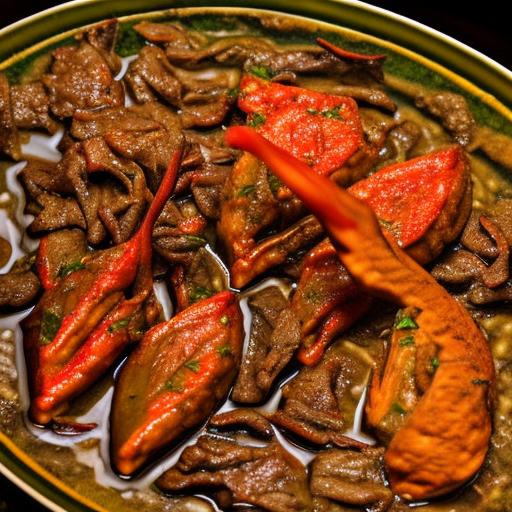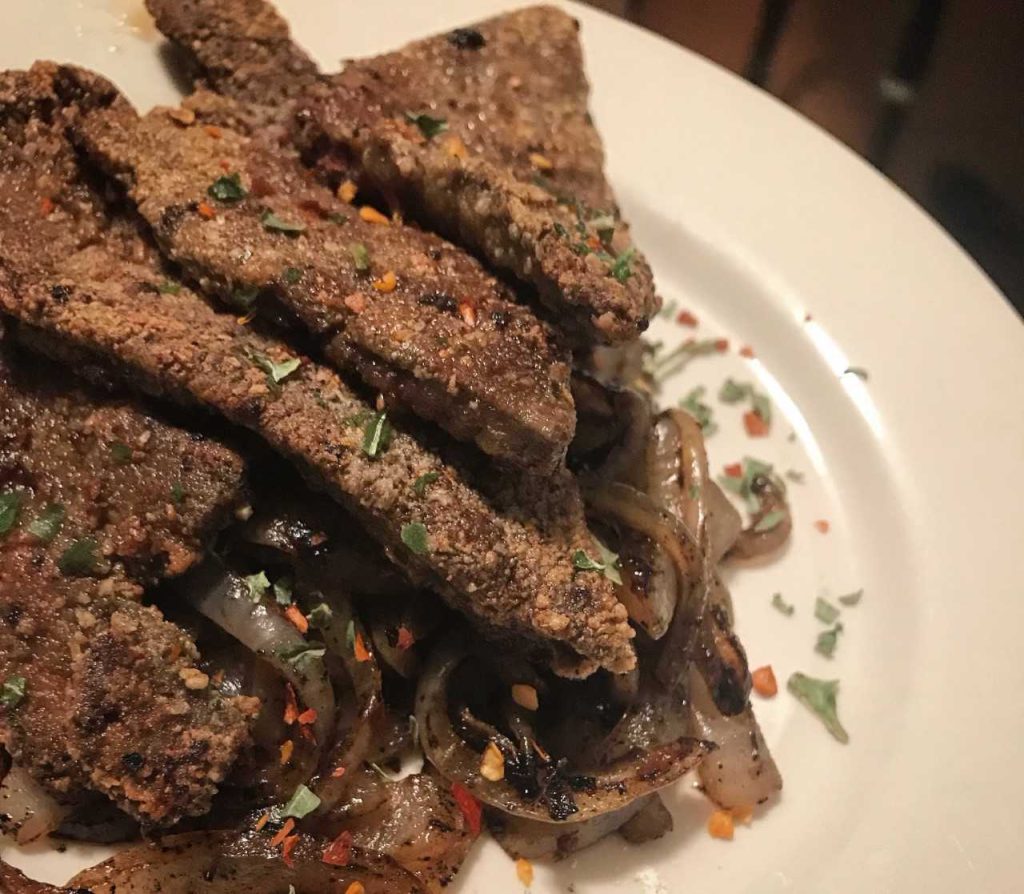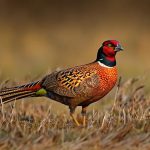Your cart is currently empty!

Are You Eating Safe? Ask Yourself What Does a Healthy Deer Liver Look Like Before Cooking!

Table of Contents
Introduction
Ah, the thrill of the hunt! If you’re like me, you cherish every moment out in the wild, tracking, waiting, and finally claiming your prize. But with the excitement of a successful hunt comes the responsibility of ensuring what we bring to the table is safe for consumption. It’s a lesson I learned early in my hunting journey, and trust me, the last thing you want is to compromise on safety. One of the most telling signs of a deer’s health lies in its organs, specifically the liver. So, “what does a healthy deer liver look like?” you might ask. A valid question, especially when you’re out in the field, knife in hand, ready to prep your game. Throughout this piece, we’ll delve deep into that question, ensuring that by the end of it, you’ll be as adept at identifying a prime, healthy liver as you are at aiming for that perfect shot.
The Anatomy of a Healthy Deer Liver
Ah, the deer liver – a delicacy for some and a sign of a successful hunt for others. Understanding its anatomy is key not just for culinary reasons but also to determine the health of your game. Let’s break down the anatomy of what a healthy deer liver should ideally represent.
Size, Color, Texture, and Consistency
First off, size matters, but not always in the way you might think. A fully grown deer’s liver typically weighs between 1 to 1.5 pounds. It should be plump but not overly enlarged. An excessively large liver might indicate a health problem.
Next, let’s talk color. Ever wonder, “what does a healthy deer liver look like in terms of hue?” Well, the liver should have a rich, dark reddish-brown color. If it’s pale, it could signify a health issue or a deficiency. Similarly, a healthy liver shouldn’t have any greenish discoloration – that’s a sign of bile contamination.
Texture-wise, the liver should be smooth to the touch. It shouldn’t be gritty or overly slippery. If you press it slightly with your fingers, it should be soft but not mushy.
Consistency plays a role too. A healthy liver will be uniform in its texture, without any hard spots or lumps. Irregularities in consistency might indicate disease or parasites. See below for a healthy good eatin’ deer liver:

The Fresh Smell of a Healthy Liver and Visible Signs to Watch Out For
Now, let’s get a bit more sensory. The nose knows, they say, and this holds true for deer livers too. A healthy one will have a fresh, almost metallic scent. If it gives off a sour or off-putting odor, chances are it might be spoiled or diseased.
But before you even get to the smell, there are visual cues to look out for. Spots, cysts, or visible parasites are definite red flags. A healthy liver should be spot-free. If you see white or yellowish cysts or any irregular growths, it’s best to be cautious and avoid consumption.
Anecdote: Lessons from a Seasoned Hunter
I still remember a hunting trip I took with old-timer Gary. We were deep in the woods, and I had just bagged a decent-sized buck. As we prepped the deer, I proudly showed off the liver, thinking it was a prime piece. Gary, with his decades of hunting experience, took one look and shook his head. Pointing at some tiny white spots I had missed, he taught me my first lesson in liver health. Those spots, he explained, were indicative of a parasitic infection. We ended up discarding that liver.
Another time, I came across a liver that seemed paler than usual. It was almost a light pink. This was another lesson from nature. Gary explained that such a pale liver could mean the deer had some deficiency or health issue.
Both these instances taught me the importance of really looking at and understanding what a healthy deer liver should be like. It’s not just about bagging the game; it’s about ensuring what you bring home is safe and healthy for consumption.
Common Diseases and Indicators in Deer Liver
Venturing into the world of hunting is as much about appreciating the thrill of the chase as it is about understanding the game you bag. After all, many of us hunt not just for sport, but for sustenance. It’s vital, then, to recognize the markers of a healthy catch, particularly when inspecting something as crucial as the deer liver. With the question, “what does a healthy deer liver look like?” often echoing in our minds, it’s equally crucial to flip that query and ask, “what does an unhealthy deer liver look like?” Let’s unpack this a bit.
Diseases that Can Affect a Deer Liver
Liver Flukes: These are parasitic flatworms that often take residence in a deer’s liver, causing damage and inflammation. If you slice open a liver and notice irregular, winding tracks or visible worms, you might have flukes on your hands. Infected livers might appear swollen and may have grayish fibrous areas.
Abscesses: Caused by bacterial infections, abscesses in deer livers manifest as pus-filled pockets. These are easy to spot: they appear as bulging, whitish-yellow nodules, and they’re as unpleasant as they sound. If you cut into them, they may release foul-smelling pus.
Spots: Liver spots can vary in appearance, but they often signify parasitic infections. They might appear as tiny white pinpricks or larger, more prominent patches. These should not be confused with occasional blood spots or discolorations which can be a natural occurrence.
The Impact of Consuming an Infected Liver on Human Health
While the instinct might be to use every part of the deer, safety should always come first. Consuming an infected deer liver can have adverse effects on human health. For instance, liver flukes, once ingested, can potentially take up residence in our bodies too. This can lead to a condition called fascioliasis, which affects the liver and bile ducts, leading to abdominal pain and other digestive issues.
Abscesses are a direct sign of bacterial infection. Eating meat that has bacterial growth can cause food poisoning, characterized by nausea, vomiting, and diarrhea.
It’s not just about immediate illness, either. Regularly consuming tainted meat might have long-term effects on our health, potentially damaging vital organs or compromising our immune systems.
Tips to Identify an Unhealthy Liver
- Texture and Consistency: While we’ve touched upon the consistency of a healthy liver, be wary of livers that feel too hard or too soft. This could be indicative of an infection or another underlying issue.
- Discoloration: Any greenish tint might indicate bile contamination. An unusually pale liver, as mentioned earlier, can be a sign of health issues in the deer.
- Smell: Trust your nose. If the liver has a sour or overly pungent smell, it’s best to avoid it. Fresh liver will have a metallic, iron-rich scent.
- Visible parasites or abnormalities: This might sound like a no-brainer, but always be on the lookout for visible worms, cysts, or any other growths.
In essence, while the bounty of the hunt can be immensely rewarding, it’s crucial to approach the post-hunt with a discerning eye and a commitment to safety. It’s not just about appreciating nature’s offerings but doing so in a way that ensures our well-being.
Preparing the Liver – Steps to Ensure Safety
There’s an old saying among hunters that goes, “Respect the game, from the hunt to the plate.” While bagging a deer is a significant accomplishment, the journey doesn’t end there. How we handle, prepare, and cook our game is equally vital. And when it comes to deer liver, a beloved delicacy among many, ensuring safety is paramount. After all, when you ponder the question, “what does a healthy deer liver look like?”, it’s just as important to consider how it transitions from field to fork.
Proper Cleaning and Inspection Before Cooking
First things first: cleanliness is key. Begin by rinsing the liver under cold, running water to remove any residual blood or debris. This not only helps in giving it a preliminary clean but also offers a clearer view for inspection.
As you clean, feel the liver’s texture, and look closely for any irregularities. Remember, a healthy liver should be relatively smooth and uniform in consistency. Be sure to trim away any visible connective tissue or bile ducts. If you spot any cysts, abscesses, or signs of parasites, it’s wise to err on the side of caution and discard the liver. The health and safety of those consuming the liver should always be a priority.
Storage Tips for Optimal Freshness
If you’re not cooking the liver immediately post-hunt, proper storage is crucial to maintain its freshness and prevent bacterial growth.
- Rapid Cooling: Start by cooling the liver as soon as possible. Use a cooler with ice packs or ice, ensuring that the liver is well-covered.
- Packaging: Once cooled, transfer the liver to a sealable plastic bag or vacuum-sealed bag, pushing out as much air as possible before sealing. This prevents freezer burn and maintains quality.
- Refrigeration: If you plan on cooking the liver within a day or two, storing it in the refrigerator is sufficient. Always keep it at the bottom shelf to prevent any potential cross-contamination with other foods.
- Freezing: For longer storage, freeze the liver. Remember to label the bag with the date of the hunt. While frozen liver can last for several months, for optimal taste and texture, it’s best consumed within one to three months.
Recommended Cooking Methods for Safety and Savor
Deer liver, when cooked right, is a delightful treat, tender and packed with flavor. But beyond taste, the cooking process also ensures the elimination of potential pathogens.
- Pan-searing: A classic method. Season the liver slices, then sear them in a hot skillet with some butter or oil. Ensure both sides have a nice brown crust. This method not only locks in the flavors but also ensures the liver is cooked thoroughly.
- Grilling: If you’re in the mood for some outdoor cooking, grilling the liver is a great option. Just make sure it’s cooked all the way through, achieving those beautiful grill marks on both sides.
- Slow Cooking: For those who prefer their liver soft and tender, slow cooking in a stew or casserole is ideal. The extended cooking time guarantees that any lingering bacteria are eliminated.
In all methods, ensure the liver’s internal temperature reaches at least 160°F (71°C) for safety.

Remember, hunting is as much about the respect we show our game post-hunt as it is about the chase. By following these steps, you ensure not just a tasty meal, but a safe one – a true homage to the noble deer you’ve taken.
Related Questions
Can you consume a deer liver with spots?
Well, friend, spots on a deer liver can be a bit tricky. While some minor discolorations might be natural, spots can often indicate a parasitic infection or other health concerns. From my time hunting small game, I’ve learned it’s always better to err on the side of caution. If you notice significant spotting or irregularities on the liver, it’s wise to play it safe and not consume it. Remember, the health of your dinner table is paramount.
How soon should you inspect the liver after a successful hunt?
Right after you’ve field-dressed your deer is the best time to inspect the liver. This not only gives you a fresh perspective on its health but also helps in making decisions about storage or immediate preparation. Over the years, I’ve found that the sooner you check, the easier it is to identify any issues. Plus, it’s a fresh catch, so you’ll get the most accurate sense of “what does a healthy deer liver look like” in its most natural state.
Are there any tests or checks that can ensure the liver is disease-free?
While visual inspection and palpation (feeling the texture) are the primary methods we hunters rely on, if you have concerns, you could send a sample to a wildlife lab for a more thorough examination. Some areas have testing services for hunters, particularly in regions where certain diseases are prevalent. However, in most cases, a careful visual check, combined with your knowledge of what a healthy liver should look like, will serve you well.
Can consumption of an unhealthy deer liver lead to diseases in humans?
Absolutely. Consuming an infected or diseased liver can introduce pathogens into the human body. Some liver issues, like flukes or bacterial abscesses, can lead to illnesses in humans, ranging from digestive problems to more severe conditions. That’s why I always stress that knowing what a healthy deer liver looks like is not just about good eating—it’s about safe eating. Always prioritize your health and that of those sharing your table.
Summary
We’ve journeyed through the nitty-gritty of distinguishing a healthy deer liver from one that might raise some eyebrows. The essence of the hunt isn’t just in the chase but also in the satisfaction of a meal well-earned and safe to eat. So, always remember to ask yourself, “what does a healthy deer liver look like?” before tossing it into the skillet. It’s a simple step, but it can make all the difference in ensuring that your hard-earned game doesn’t just fill your belly but does so safely. Here’s to many more hunts, shared stories around the campfire, and, of course, delicious meals that come with the confidence of knowing you’re eating safe. Cheers to the hunting life!

Herb has been a longtime lover of the outdoors. Whether it be hunting, camping, fishing or just getting outside to reset. Proud father and animal lover. Bourbon anyone?

Comments

Categories
- Big Game Hunting (301)
- Deer (202)
- Reviews (3)
- Shooting (16)
- Slingshot (1)
- Small Game Hunting (42)
- Upland Hunting (126)
- Waterfowl Hunting (3)





Leave a Reply